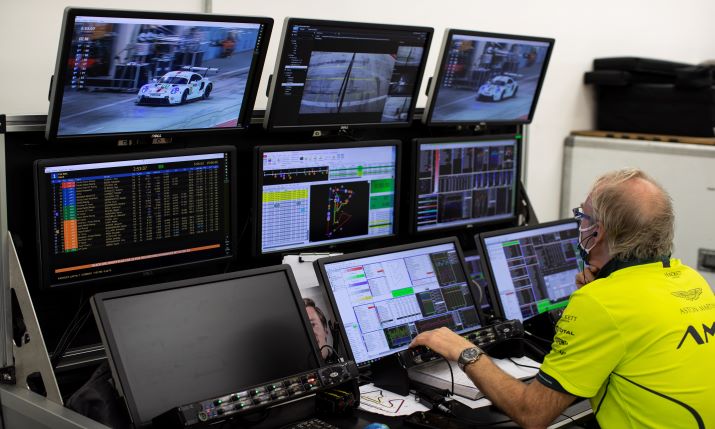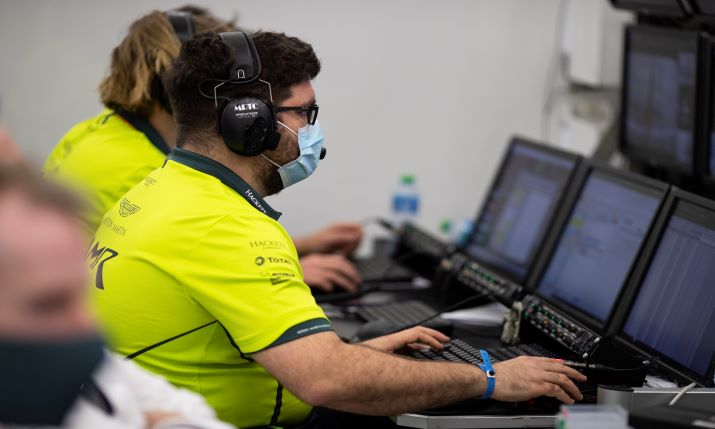Ongoing success in motorsports down to IP intercom technology, says MRTC
 UK-based MRTC, a provider of motorsport communications services, has stated that its ongoing success in the industry is down to the use of IP intercom technology from Clear-Com.
UK-based MRTC, a provider of motorsport communications services, has stated that its ongoing success in the industry is down to the use of IP intercom technology from Clear-Com.
The company partnered with Clear-Com a decade ago in order to strengthen its product offering with the addition of IP intercom solutions.
According to MRTC founder Ken Rumbold: “The beauty of Clear-Com products, without any doubt, is the IP side of it.”
He goes on: “Communications are often at the bottom of the barrel in terms of consideration before a race, but once you’re onsite, they are absolutely essential. If there’s any lapse in communication, it could cost the driver the race, whereas a small piece of encouragement coming through the driver’s headset, could result in a win.”
The role of intercom in motorsports has grown considerably since the 1970s and 1980s when only a few key people were connected to two-way radios into the integrated network as we know it today, where all aspects of the event – even broadcast – are connected locally via MADI or over IP via a Dante feed.
“We started working with Clear-Com over 10 years ago, and the Clear-Com products that were introduced then were revolutionary,” explains Rumbold. “The IP solution was just so simple and could easily fit on the networks that the customers were starting to develop in their garages.”
Most contemporary sites are already wired with network-ready Cat5e/6 cabling, so Clear-Com IP intercom systems can be brought onsite without major infrastructure updates. In short, Rumbold says, “[IP] is flexibility and it’s minimising infrastructures”.
IP systems offer security, flexibility, and extremely high audio quality, as well as impressive bandwidth, allowing teams to connect easily between different systems offsite and at the track. This enables critical intercommunication between different team personnel, with a choice of direct (point-to-point) or one-to-many (group and party-line or conference) connections.
IP solutions can provide connectivity to any industry-standard intercom or audio devices over LAN, WAN, or IP networks, making it seamless to connect with other event organisations, such as the broadcaster covering the race. It is common to switch selected intercom communications from the race drivers and Race Control systems to a multichannel feed out of the intercom system to broadcasters who may use it for background audio in their program sound.
“We can feed them high-quality audio without having to go through the analogue process,” says Rumbold.
MRTC has introduced FreeSpeak II Digital Wireless Intercom into many applications, including races and other large events. “The sheer flexibility of it is what counts and what wins over two-way radio,” Rumbold explains.
 FreeSpeak II is a five-channel, full-duplex wireless intercom solution, suitable for large-scale, complex designs or specialised applications.
FreeSpeak II is a five-channel, full-duplex wireless intercom solution, suitable for large-scale, complex designs or specialised applications.
“Customers feel like once they’ve sat down at an intercom panel they don’t want to go back to simplex speech and lower audio quality,” adds Rumbold. “With FreeSpeak II they are guaranteed to go about their business without the worry of missing any information.”
An important aspect of the Clear-Com system is its HCI API which has allowed MRTC to customise an integration with Kenwood’s two-way radios. This allows MRTC to transfer key data from a radio – driver IDs and data – to the Clear-Com intercom system. The comms systems provided by MRTC allow an intercom panel user to speak directly to one radio on one radio channel and provide all the messaging required for that application, at the push of a button.
“It has revolutionised what we can do for the lower racing series because the expense of trying to have individual communications requires lots of radio channels. With Clear-Com’s HCI we have a solution appropriate for these series,” Rumbold says.
Perhaps the most important benefit of IP systems during COVID has been the ease with which it allows teams to work remotely. Whereas up to 4000 racing team members were onsite at motorsport races pre-COVID, it has now narrowed down to around 1000 staff onsite.
“In a recent event at the restart of motor racing, I was in the UK and able to remotely programme, manage and monitor a system in Germany, while the live event was going on, using my Agent-IC mobile app,” recalls Rumbold. “There were a couple guys onsite with the primary system, but most of us connected over VPN and it was like we were there!”
Agent-IC operates on smart devices over 3G, 4G, LTE and WiFi networks and connects to the Eclipse HX Digital Matrix or LQ Series Interface.
During the pandemic, some customers and senior management do not want to risk going to the racetrack, but they still want to be able to have input in event operations. In this case, they can download Agent-IC on their phones and connect to the main intercom system from anywhere in the world.
“The applications for Agent-IC are endless, and we’re now promoting it strongly and allowing customers to use it for what we would call mission-critical communications,” says Rumbold.
“Everyone was looking into remote production when COVID hit,” he concludes, “and I think we will see over the next couple years in motorsport that people will need to reinvest in even more intercom connections to facilitate remote productions.”
